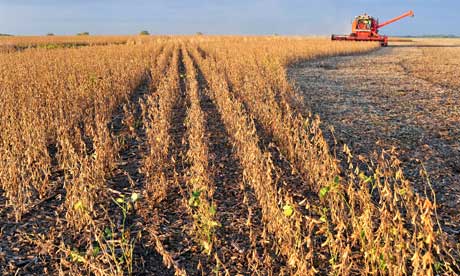 Yale |
Yale | If you wanted to really mess with the world’s food production, a good place to start would be Bou Craa, located in the desert miles from anywhere in the Western Sahara. They don’t grow much here, but Bou Craa is a mine containing one of the world’s largest reserves of phosphate rock. Most of us, most days, will eat some food grown on fields fertilized by phosphate rock from this mine. And there is no substitute.
The Western Sahara is an occupied territory. In 1976, when Spanish colonialists left, its neighbor Morocco invaded, and has held it ever since. Most observers believe the vast phosphate deposits were the major reason that Morocco took an interest. Whatever the truth, the Polisario Front, a rebel movement the UN recognizes as the rightful representatives of the territory, would like it back.
Not many people would call phosphate a critical issue or one with serious environmental consequences. But even leaving aside the resource politics of the Sahara, it is an absolutely vital resource for feeding the world. It is also a resource that could start running low within a couple of decades — and one we grossly misuse, pouring it across the planet and recycling virtually none of it.
The world’s food supplies are alarmingly dependent on the phosphate fertilizer that is hewn from the desert of the Western Sahara. The vast open-cast mine at Bou Craa delivers several million tons of phosphate rock every year down a 150-kilometer-long conveyor belt, the world’s longest, to the Atlantic port of El Ayoun. From there, it is distributed around the world and made into fertilizer.
Morocco’s phosphate reserves are owned by the Office Cherifien des Phosphates, a Moroccan state agency. Given the almost unlimited executive powers of the Moroccan monarch, it might reasonably be said that most of the world's known reserves of phosphate are, in effect, owned by King Mohammed VI and his Alaouite dynasty, which has reigned in Morocco since the 17th century.
If the people of Western Sahara ever resume their war to get their country back — or if the Arab Spring spreads and Morocco goes the way of Libya — then we may be adding phosphate fertilizer to the list of finite resources, such as water and land, that are constraining world food supplies sooner than we think.
Phosphorus is one of the building blocks of all life. Every living cell requires it. Plants need phosphorus to grow as much as they need water. Many soils do not have enough to meet the voracious demands for phosphorus of the high-yielding crop varieties of the Green Revolution. But we can provide more by mining phosphate rock and turning it into fertilizer to spread on the land.
It takes one ton of phosphate to produce every 130 tons of grain, which is why the world mines about 170 million tons of phosphate rock every year to ship around the world and keep soils fertile.
Currently, only about 15 percent of that comes from mines in the Western Sahara and Morocco. But the only other large producers, the U. S. and China, mostly keep supplies for their own use. So Morocco is by far the biggest contributor to international trade, with more than half the total business. The people of India, the world’s largest importer, would be starving without Morocco’s phosphates. Brazil’s agricultural boom would never have happened otherwise.
Even more critically in the longer term, the U.S. Geological Survey says that of the 65 billion tons of the world’s known phosphate rock reserves — and the estimated 16 billion tons that might be economic to mine — almost 80 percent is in Western Sahara and Morocco. Add in China’s reserves, and the figure rises to almost 90 percent. The U.S., with 1.4 billion tons, is close to running out. You can see why agronomists are starting to get worried.
The world is not about to run out of phosphate. But demand is rising, most of the best reserves are gone, and those that remain are in just a handful of countries. Dana Cordell of Linkoping University in Sweden, who runs an academic group called the Global Phosphorus Research Initiative, says we could hit “peak phosphorus” production by around 2030.
As domestic production wanes, the U.S. is starting to join those countries — most of the world, in fact — that import phosphate from Morocco and the Western Sahara. American imports cross the Atlantic courtesy of Potash Corp, the Canada-based fertilizer company whose hostile takeover bid by the Australian mining giant BHP Billiton was blocked by the Canadian government last year. And phosphate mining in Florida, which is home to the world’s largest phosphate mine, is being challenged by environmentalists concerned about its impact on waterways and drinking water supplies.
Already, like other key commodities with once-dominant sources running low, the price of phosphate is starting to yo-yo alarmingly. Prices spiked at an 800-percent increase in 2008.
















